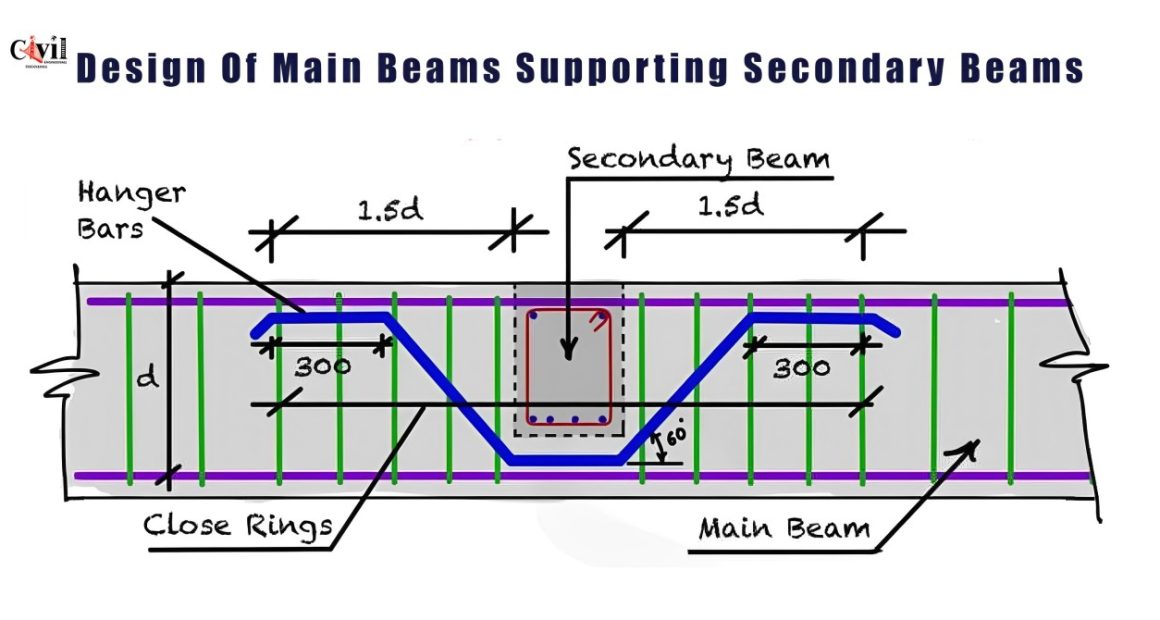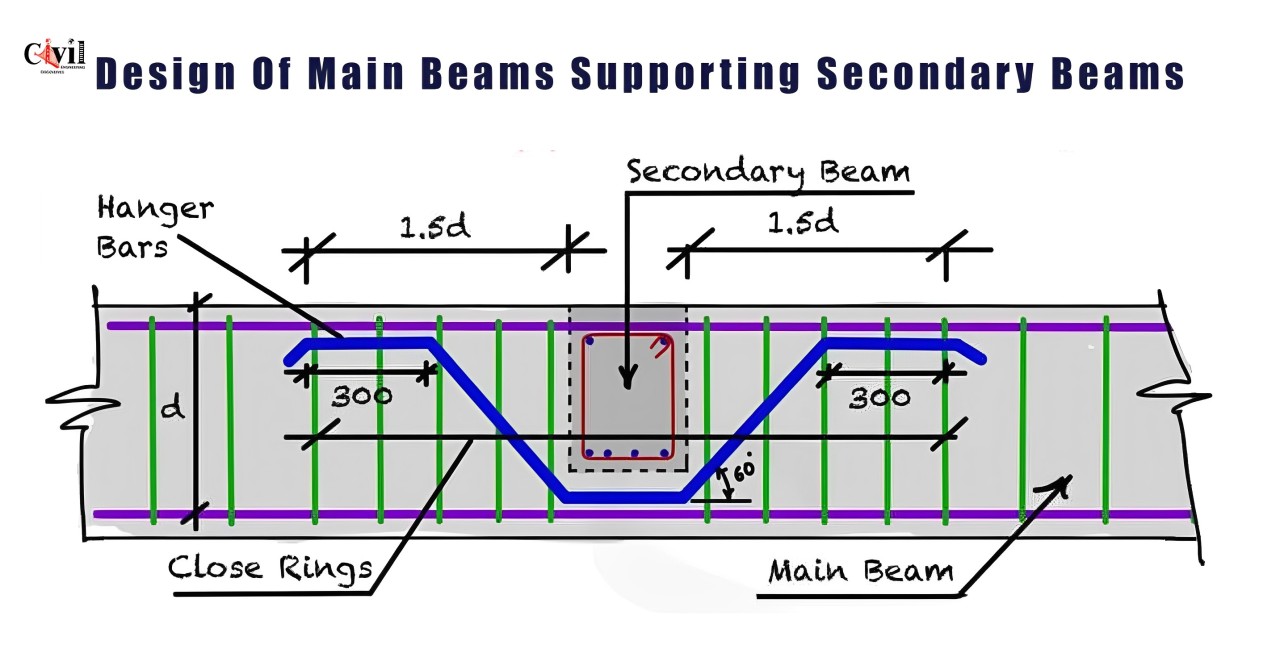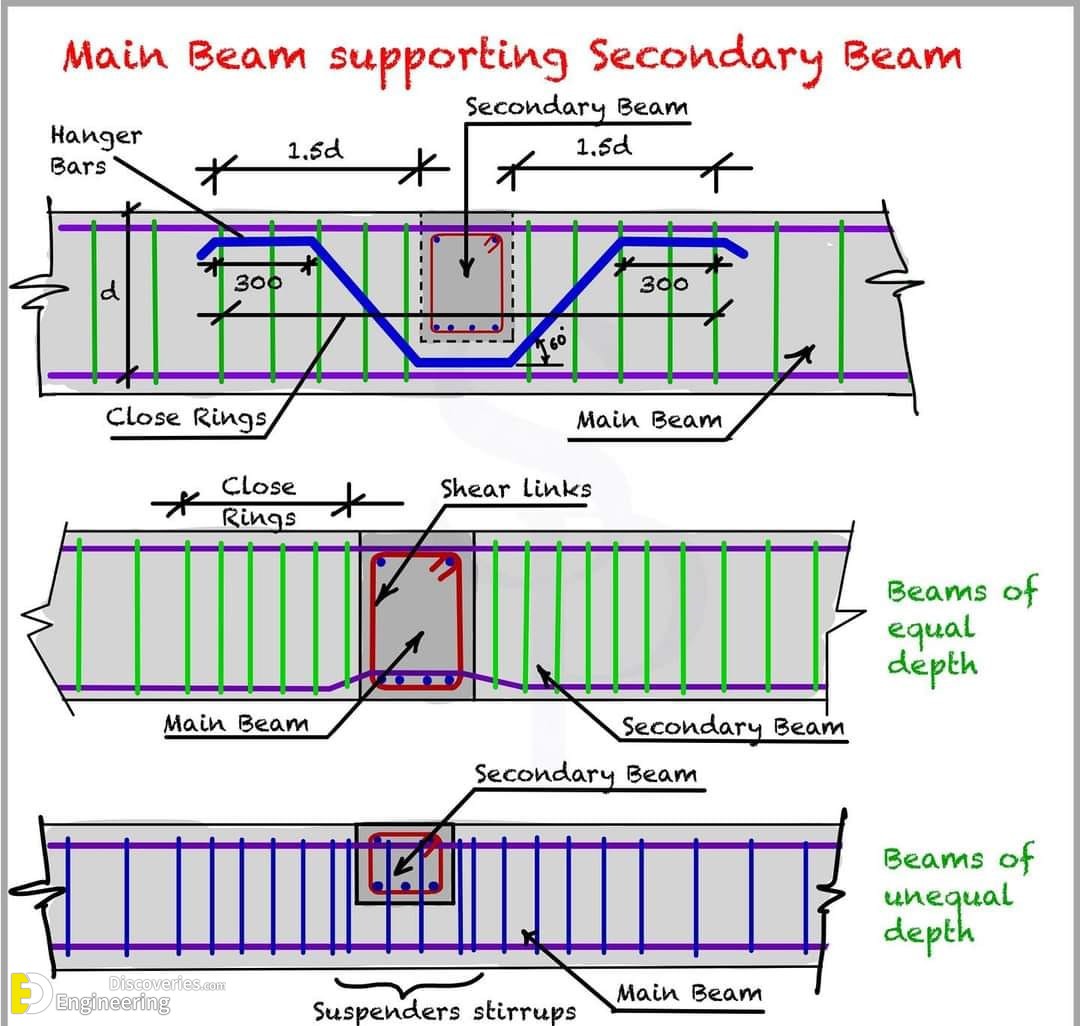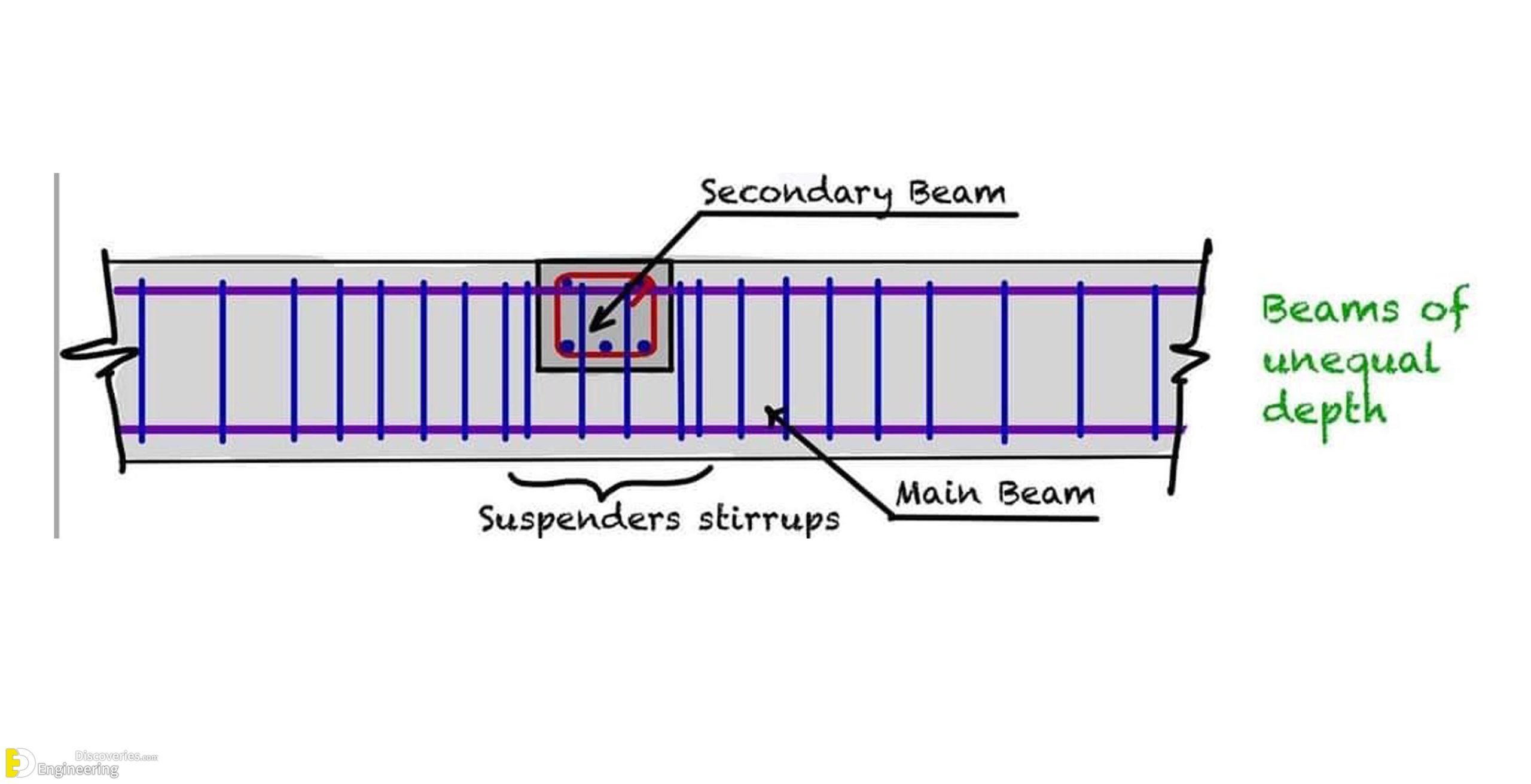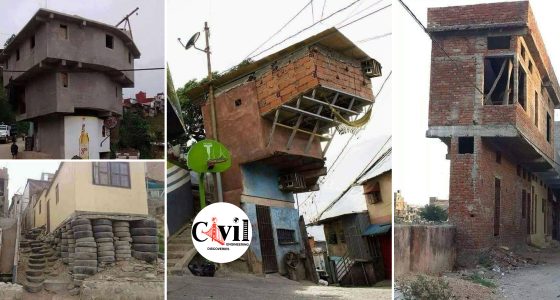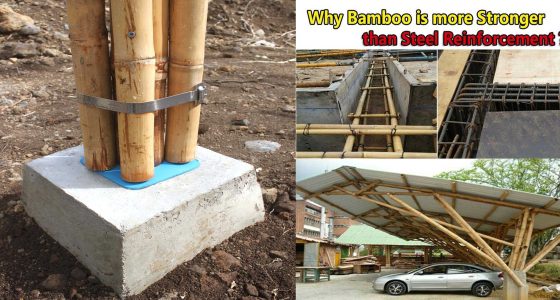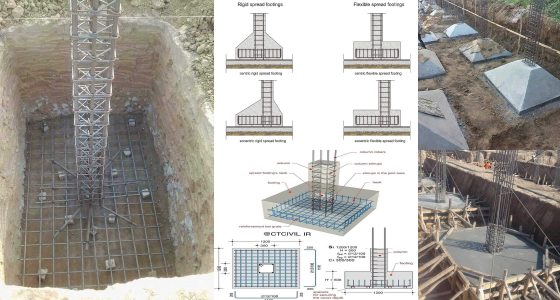When it comes to constructing durable and stable structures, the role of main beams supporting secondary beams is critical. These elements serve as a backbone to the load-bearing structure, ensuring that buildings withstand various loads and stresses. This article delves into the intricate details of the design, reinforcement, and placement of these beams, offering an in-depth understanding of how they function within a structure. We will cover the mechanics of beam connections, reinforcement patterns, and structural integrity aspects, providing valuable insights for civil engineers, architects, and construction enthusiasts.
What are Main and Secondary Beams?
In structural engineering, main beams and secondary beams work together to create a cohesive framework.
- Main Beams: These are the primary load-carrying elements in a structure. They support the entire structural weight, including the loads from secondary beams, floors, and any additional live or dead loads.
- Secondary Beams: Also referred to as “joists,” secondary beams distribute loads to the main beams. Their purpose is to reduce the span length of floor slabs and distribute loads evenly across the structure.
Understanding their roles is essential for designing structures that are both efficient and safe.
Detailed Analysis of Beam Reinforcement
Proper reinforcement in beams is crucial for the overall strength of a structure. Here, we look into the various elements that contribute to effective reinforcement in main beams supporting secondary beams.
1. Hanger Bars
Hanger bars are an essential part of the beam design, especially when a secondary beam intersects with a main beam. Hanger bars are provided at the points where the secondary beam connects to the main beam. They ensure that the torsional forces (twisting actions) and shear stresses are transferred effectively between the beams. In the given design, hanger bars are strategically placed 1.5d (where d represents the depth of the main beam).
2. Close Rings
In reinforced concrete beams, close rings (or stirrups) are used to resist shear forces and diagonal tension. They are particularly concentrated near beam junctions where shear forces are high. The close rings ensure that the concrete is adequately confined, minimizing the risk of shear failure. For beams with varying depths, the arrangement of rings is especially crucial to maintain uniform force distribution.
3. Shear Links
Shear links or stirrups in beams are vital for resisting shear forces that arise due to loads. In the case of beams of equal depth, shear links around the secondary beam provide extra reinforcement to counteract the shear forces transferred from the secondary beam. This prevents the formation of shear cracks, which can compromise structural integrity.
4. Reinforcement Bars Placement
Proper placement of reinforcement bars, such as main reinforcement and suspender stirrups, is necessary for controlling deflection and ensuring the flexural strength of the beams. Main beams typically have more reinforcement at the bottom due to tensile forces, whereas secondary beams may have balanced reinforcement depending on their connection to the slab.
Design Considerations for Beams of Equal Depth
When main beams and secondary beams are of equal depth, the junction between them must be carefully designed to ensure that loads are transferred without causing excessive bending or torsion. The reinforcement of both beams should be continuous across the junction to prevent discontinuities in force transfer. Additionally, shear links at these junctions help to resist shear stresses caused by load transfer between beams. The consistent depth simplifies the connection design, reducing potential weak points in the structure.
Design Considerations for Beams of Unequal Depth
The design becomes more complex when the main beams and secondary beams have unequal depths. Here, special attention is needed to ensure that the depth difference does not create a weak point at the junction. The depth difference can result in increased shear stresses, which require additional reinforcement like suspender stirrups. These elements hold the junction together, ensuring that the secondary beam is properly anchored into the main beam. This arrangement is vital for maintaining structural stability and preventing stress concentration at the connection point.
How to Calculate the Reinforcement for Beams?
To ensure structural stability, precise calculation of reinforcement is necessary. Here is a simple approach to calculate reinforcement:
- Determine Load Requirements: Understand the type of loads (dead load, live load) and their magnitude.
- Calculate Bending Moment: Use formulas like M = wL^2/8 (for a uniformly distributed load) where M is the bending moment, w is the load, and L is the span length.
- Find Shear Force: Determine the shear force at different points along the beam.
- Select Reinforcement Bars: Based on the calculated bending moment and shear force, select appropriate diameters and lengths of reinforcement bars.
- Determine Stirrups Spacing: Based on the shear force near the supports and mid-span, calculate the spacing of stirrups to ensure shear strength.
Click Here To See Main Reinforcement In Stair Design: Key Techniques For Stability And Strength
Photo Credit: Structure Pedia
